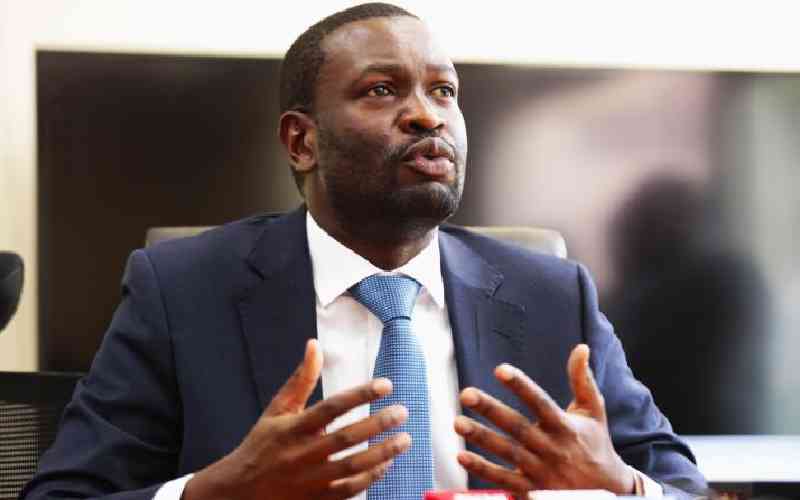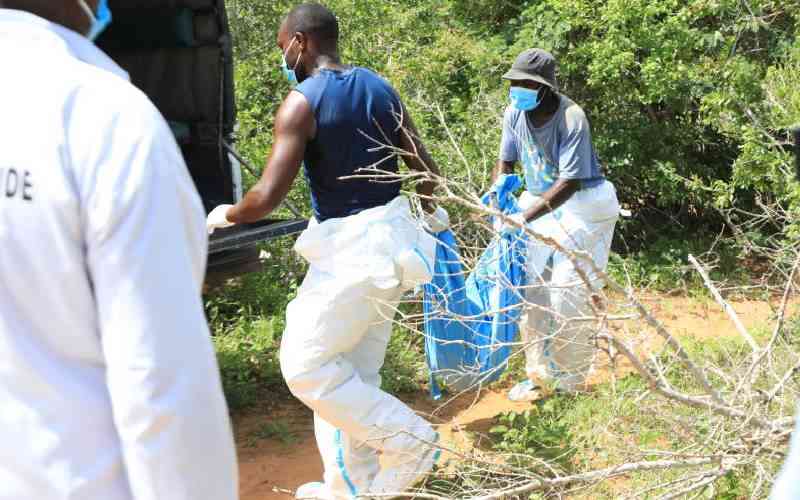By Rawlings Otieno
 |
|
A worker at East African Compliant Recycling [Photo:Courtesy of NEMA] |
Businesses in Kenya and Africa are increasingly challenged with how to dispose of the growing amount of electronic-waste (E-waste).
Discarded electronic devices and components like computers, telephones, as well as substances involved in their manufacture forms the backbone of e-waste.
This makes disposal of the electronic equipment a pressing problem because it frequently contains material that threatens human health and the environment.
A survey by Eco-Ethics – Kenya indicate that the methods used in the extraction of the metals are crude and pose a great risk to human health and the environment.
Some chemicals found in the e-waste are known to be persistent and accumulate in fatty tissues of living organisms.
They are suspected to be causing cancer, kidney defects, affecting the nervous system and weakening of the immune system.
However, with proper collection and dismantling of the electronics, it is not only viable money making venture but also a relief to the environment.
The European Environment Agency and UNEP estimate that 40-50 million tones of electrical equipment waste are produced each year globally.
Economic Benefits
“Proper collection, dismantling and separating of e-waste will enable Kenya’s business to manage better their environmental impact while also strengthening Kenya’s competitiveness in the East African region,” says East African Compliant Recycling (EACR) Managing Director, Eoghan Crosby.
Eoghan stressed imports from neighbouring countries would allow Kenya to act as a recycling centre of excellence for East Africa and would allow Kenya access to the valuable raw materials contained within the products
“Establishing proper collection and treatment makes business sense and can provide green jobs and contribute to the economy,” he adds.
He believes for any venture on the waste to bear benefits, e-waste management systems need to fit local country conditions and educating and including the informal sector into any e-waste systems is critical.
EACR was established with funding from computer manufacturer, Hewlett – Packard (HP), with the goal of being a self-sustaining enterprise – because e-waste has a value.
Crosby says disposal of electronic waste – e-waste- poses serious risk to residents and the environment.
“Mother boards of computer sets are highly toxic. Tonners powder can kill and tonners dropped into Indian Ocean contain very hazardous materials while tubes dumped into the ocean are very hazardous,” explained Crosby on the occasion to mark this year’s World Environment Day.
The theme ‘Green Economy: Does It Include You’ dominated the celebrations held at the Bamburi Cement and Lafarge ecosystem and presided over by Environment and Mineral Resources Assistant Minister Ramadhan Kajembe.
On a daily basis Kenyan port of Mombasa receives containers filled with computers and peripherals numbering in the thousands. These computers find their way into the businesses, educational institutions, governmental offices, and consumers’ homes.
In many developed countries, the obsolescence period for personal computers is about three years while in Kenya the figure is believed to be at seven.
Once the computer reaches its end of life, it often gets sold off at reduced prices and continues trickling down ending up in its various toxic parts burned or dumped behind an informal sector workshop.
Safeguarding the Environment
“The ecosystem of most parts of the country has remained vulnerable. Local communities should support the efforts of the facility that is in the forefront in promoting a green economy,” said National Environment Management Authority (NEMA) Director Prof. Geoffrey Wahungu.
Among measures Wahungu proposed members of the local community spearhead are delivering the waste to the premises, Nairobi based computer for schools or to mobile Safaricom mobile subscriber that re-cycles absolute phones.
Wahungu noted that by tackling the problem of e-waste, the project has been in the forefront of safeguarding the environment and ensuring green economy thrives.
“It is an initiative that has been promoting and investing in cleaner production technologies and compliance to environmental regulations by the project,” said Wahungu.
Crosby said plans are underway to upscale the services of the project within the wider East African Region when a re-cycling firm is built on a two and a half acre piece of land in the Export Processing Zone.
He explained the move that will generate local income and employment and at the same time address current health, safety and environmental issues within East Africa.
The firm arrived at the decision after it carefully carried out an analysis of available e-waste in Kenya and concluded the volume it was not sufficient to sustain a fully comprehensive recycling system.
Businesses in Kenya and Africa are increasingly challenged with how to dispose of the growing amount of e-waste, which is any refuse created by discarded electronic devices and components like computers, telephones, as well as substances involved in their manufacture.
This makes disposal of electronic equipment a pressing problem because it frequently contains material that threatens human health and the environment.
 The Standard Group Plc is a
multi-media organization with investments in media platforms spanning newspaper
print operations, television, radio broadcasting, digital and online services. The
Standard Group is recognized as a leading multi-media house in Kenya with a key
influence in matters of national and international interest.
The Standard Group Plc is a
multi-media organization with investments in media platforms spanning newspaper
print operations, television, radio broadcasting, digital and online services. The
Standard Group is recognized as a leading multi-media house in Kenya with a key
influence in matters of national and international interest.
 The Standard Group Plc is a
multi-media organization with investments in media platforms spanning newspaper
print operations, television, radio broadcasting, digital and online services. The
Standard Group is recognized as a leading multi-media house in Kenya with a key
influence in matters of national and international interest.
The Standard Group Plc is a
multi-media organization with investments in media platforms spanning newspaper
print operations, television, radio broadcasting, digital and online services. The
Standard Group is recognized as a leading multi-media house in Kenya with a key
influence in matters of national and international interest.






